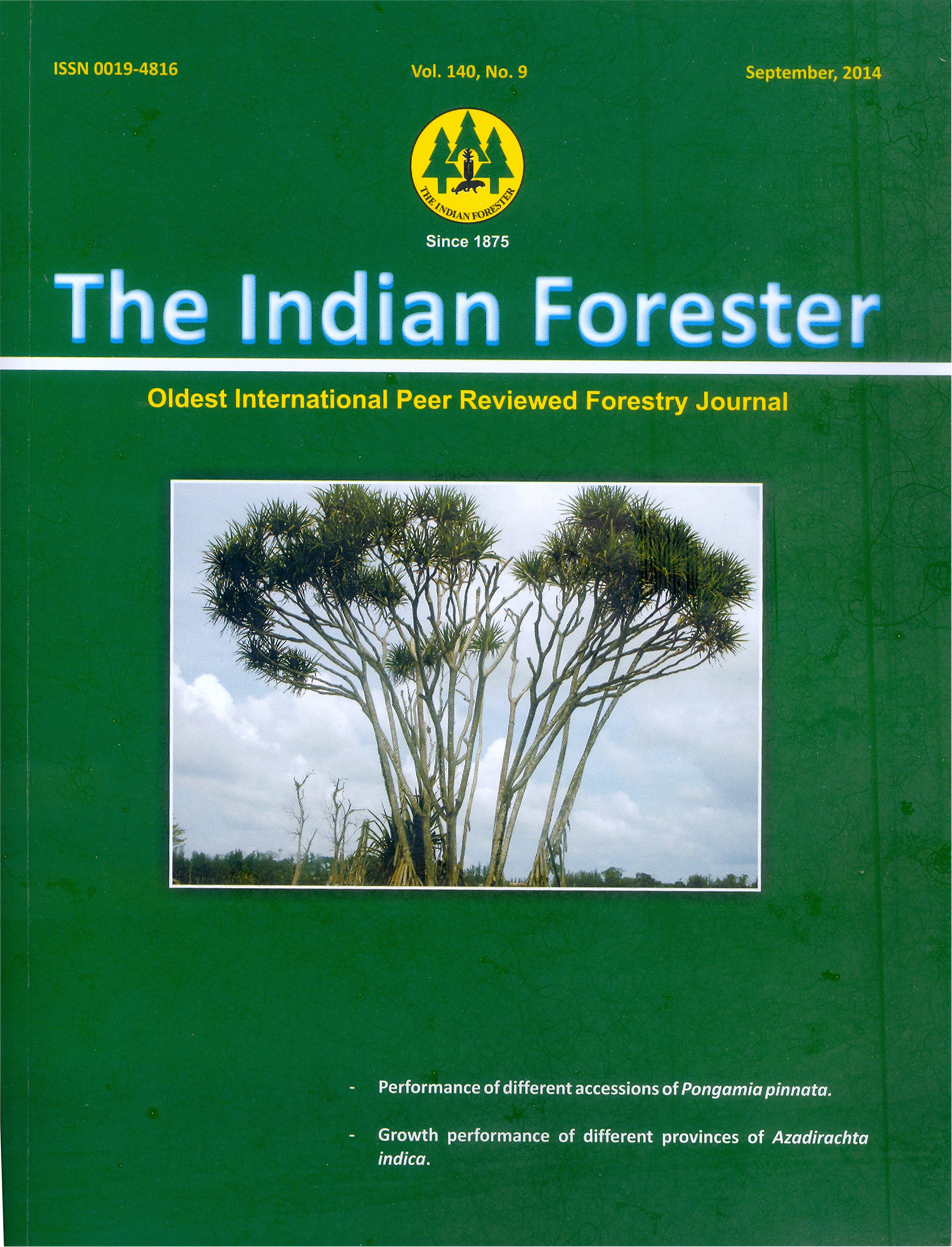Rediscovery of Termitoloemus Marshalli Baranov (diptera: Calliphoridae: Bengaliinae), A Predator of Termites, after 78 Years
DOI:
https://doi.org/10.36808/if/2014/v140i9/52365Keywords:
vBiological Control, Termites, Termitoloemus Marshalli , Odontotermes Obesus, Odontotermes GiriensisAbstract
Termitoloemus marshalli Baranov (Diptera: Calliphoridae: Bengaliinae) was known to the science only through one male holotype and two female paratypes collected from Kanpur (Uttar Pradesh, INDIA) in 1935. Since then no specimen was ever captured or identified by any worker. In the present paper its rediscovery after 78 years is reported. It was found predating voraciously on the workers and soldiers of the termites Odontotermes obesus and O. giriensis in Assam and in Dehradun. Material identified is deposited in National Insect Reference Collection, FRI, Dehradun and shall also be deposited with other national and international insect depositories so that the species may be well understoodand exploited for termite biological control initiatives.References
Baranov N. (1936). Eine neue Calliphorine-Art (Dipt.), die Termiten angreift. Annals and Magazine of Natural History, (10) 17: 646-651.(in German language)
Beeson C.F.C. (1941). The ecology and control of forest insects of India and neighbouring countries. Govt. of India Publication ii + 1007 pp.
Culliney T.W. and Grace, J.K. (2000). Prospects for the biological control of subterranean termites (Isoptera: Rhinotermitidae), with special refernce to Coptotermes formosanus. Bulletin of Entomological Research, 90: 9-21.
Disney R.H.L. (1986). Two remarkable new species of scuttle-fly (diptera: Phoridae) that parasitize termites (Isoptera) in Sulawesi. Systematic Entomology, 44: 413-422
Grace J.K. (1997). Biological control strategies for suppression of termites. Journal of Agricultural Entomology, 14(3): 281-289.
Grace J.K. (2003). Approaches to Biological Control of Termites. Sociobiology, 41 (1A & B): 115-121.
Lee C.Y. (2002). Subterranean Termite Pests and their Control in the Urban Environment in Malaysia. Sociobiology, 40(1): 3-9
Logan J.W.M., Cowie R.H. and Wood T.G. (1990). Termite (Isoptera) control in agriculture and forestry by non-chemical menthods: a review. Bulletin of Entomological Research, 80: 309-330.
Mitchell J.D. (2002). Termites as Pests of Crops, Forestry, Rangeland and Structures in Southern Africa and Their Control . Sociobiology, 40(1): 47-69.
Mitra B. and Sharma R.M. (2010). Checklist of Indian Blow Flies (Insecta: Diptera: Calliphoridae, Rhiniidae). PDF document, 8 pp. Available from: http://zsi.gov.in/checklist/Indian_calliphoridae.pdf
Rajagopal D. 2002. Economically Important Termite Species in India.Sociobiology,40(1):33-46.
Richards P.B. and Sharma H.N. (1934). Bull. Dep. Agric. U.P. (Fruit Ser.) no. 33. (http://prr.hec.gov.pk/ Chapters/645S-AL.pdf).
Rognes K. (2011). A review of the monophyly and composition of the Bengaliinae with the description of a new genus and species, and new evidence for the presence of Melanomyinae in the Afrotropical Region (Diptera, Calliphoridae). Zootaxa, 2964, 1–60.
Senior-White R.A., Aubertin D. and Smart J. (1940). The fauna of British India, including the remainder of the Oriental Region. Diptera. Vol. VI. Calliphoridæ. Taylor & Francis, London, xiii + 288 pp.
Sharma H.N. (1922). A preliminary note on the action of acids, salts and alkalies on the development of culicid eggs and larvae. In Report of the Proceedings of the Fourth Entomological Meeting held at Pusa, 7th to 12th February 1921. T. B. Fletcher, Imperial Entomologist, May 5 1922, Calcutta Superintendent Government Printing, India.
Su N.Y. (1993). Managing subterranean termite populations. Pp. 45-50 in Wil;dey, K. B. and Robinson, W. H. (Eds) Proceedings of the 1st International Conference on Insect Pests in the Urban Environment, Cambridge, 30June – 3 July, 1993.
Wilcken C.F., Raetano C.G. and Forti L.C. (2002). Termite Pests in Eucalyptus Forests of Brazil. Sociobiology, 40(1): 179-190
Zanetti R., Castro R.A., Moraes J.C., Zanuncio J.C., Oliveira A.C. and Dias N. (2005). Estimation of Wood Volume Losses by Heartwood Termites (Insecta: Isoptera) in Eucalyptus Plantations in the Brazilian Savannah. Sociobiology, 45(3): 619-630.
Downloads
Downloads
Published
How to Cite
Issue
Section
License
Unless otherwise stated, copyright or similar rights in all materials presented on the site, including graphical images, are owned by Indian Forester.





